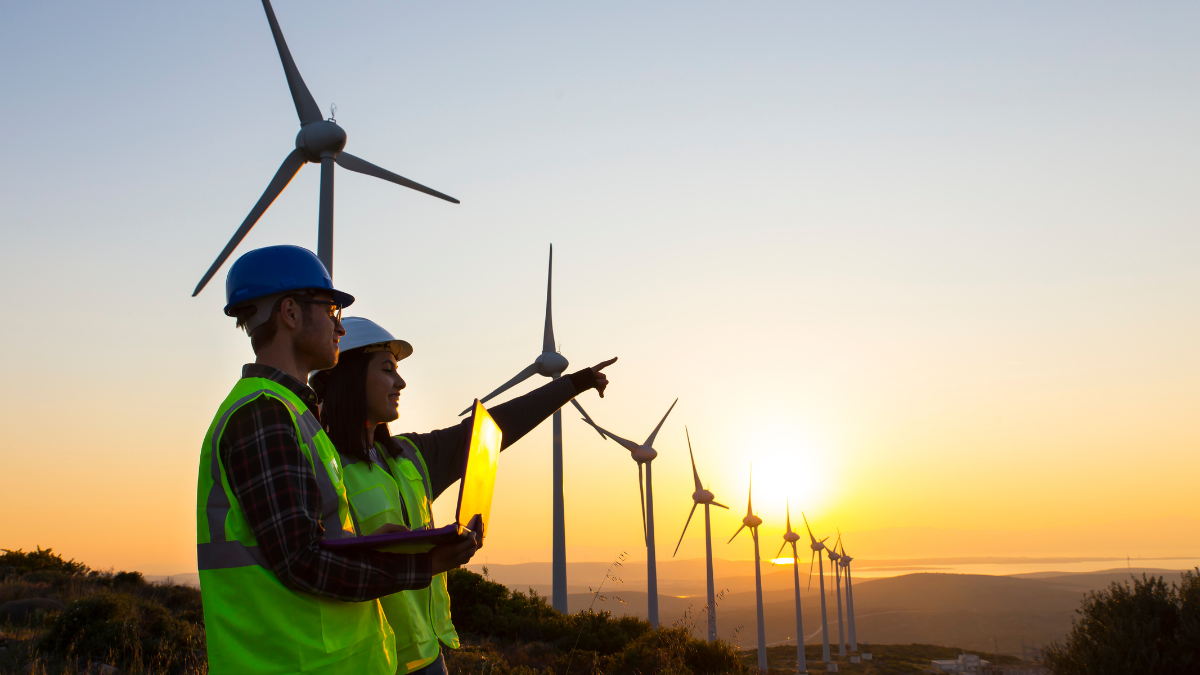
Nabla towards sustainable development in the wind industry
This weekend marks the World Day of Engineering for Sustainable Development (4 March) and World Energy Efficiency Day (5 March).
At Nabla Wind Hub, we are aware of the role that our engineers play in today world’s, facing the challenge and responsibility of developing new technologies that won’t suppose a negative impact to our environment, and at the same time, building new methods that will allow us to keep obtaining the basic needs to continue living in our society (at least as before). One of among them being Energy.
That's why we wanted to interview some of the engineers and business developers of our team to share their views with us, and to see which are the real challenges with which we are confronted in the wind energy sector on this topic.
Ainhoa Alberdi, one of our Senior Lead Life Extension Engineers, answers this first question about the current challenges with which the Engineers need to cope regarding the sustainable development in wind technology these days.
What are the current challenges with which the Engineers need to cope regarding the sustainable development in wind technology these days?
"There is a need to find a balance between designing more efficient wind turbines and the acceptance of communities. For this, there has been a significant development of offshore big turbines, since they decrease the impact on the landscape.
However, they have associated challenges that need to be addressed, such as the adequate storage technologies, which are key to further expansion. It is also crucial to redefine important components as foundations and maintenance protocols, as the new scenarios present challenging pictures in those terms." Ainhoa Alberdi, Lead Life Extension Engineer at NWH.
Sustainability is defined as the ability to maintain or support a process, which does not harm the environment, continuously over time. Which makes us wonder if today’s wind energy is completely sustainable, and good to the environment.
What does "100% sustainable wind energy" mean?
"For me 100% renewable energy means getting all energy from renewable resources, but not only this... To reach a 100% sustainable energy we need to take in mind also the production cycle of components for renewable energy and their end-of-life.
Our personal challenge is the recovery and reuse of waste from the production cycle and wind blades ant the end of their life.
At this purpose we are working on these issues through the MARLIC project, with a view to the Circular Economy." Giovanna Mangani, Innovation Manager at NWH.
At nabla, our teams are working not only to provide a cutting-edge technology that can unlock actual wind turbines for being able to supply sustainable energy to our homes for a longer period, but also to make the entire production chain of our technology sustainable.
How can we increase efficiency in wind energy production?
"There are several methods to increase the AEP (Annual Energy Production) depending on the budget or the possibilities that we have, to upgrade our turbine.
- In some models it is possible to slightly increase the maximum power simply by modifying the controller, a slight upgrade of it.
- It is also possible to opt for rerotoring solutions such as reblading or retipping, where the original blades are replaced by longer ones that produce more energy.
- Another option is to inject the iSpin technology to our wind fleet, which helps the turbine be always positioned in the direction of the wind, making the most of its energy."
Ruben Trenado, Lead Life Extension Engineer.
Our technology increases the AEP ranging from 5% to 15%, or more in some specific cases, which leads to wind energy production efficiency, at the same time as lowering the LCOE (Levelized Cost of Energy).
How does our technology help towards reaching the 7th SDG- "Affordable and clean energy for all"?
"Our technology impacts directly in lowering the LCOE (Levelized Cost of Energy) of Wind Energy facilities.
By doubling the lifespan of wind turbines under controlled long-term risk, we dilute the impact of the CAPEX and its project finance in the LCOE. By counting on accurate predictive inputs, we can deploy preventive O&M strategies which lower the OPEX, alleviating again the LCOE. Supply chains can be maintained more years, knowledge better capitalised, jobs more stable while circularity of components sensibly improved.
In addition, performance improvement technologies allow extracting more AEP – Annual Energy Production from those assets, improving the bankability of the SPV.
All of this means squeezing at its max the wind assets, stressing nature and communities with half the frequency (every 40 years instead of 20), and ultimately, at the end of the enhanced lifecycle of the power plants, enjoying a much better technology leap." Ahmed Moussa, Head of Business Development at NWH.
That is why we must continue to motivate our teams to develop new technologies and processes that meet the highest standards of sustainability and efficiency. Energy is a resource that we all need on a daily basis, from its use to keep our fridge cold to its use in the operating room during surgery. Then let's make renewable energy fully sustainable.
Share on Linkedin Share on Twitter Share on Facebook Share on Whatsapp